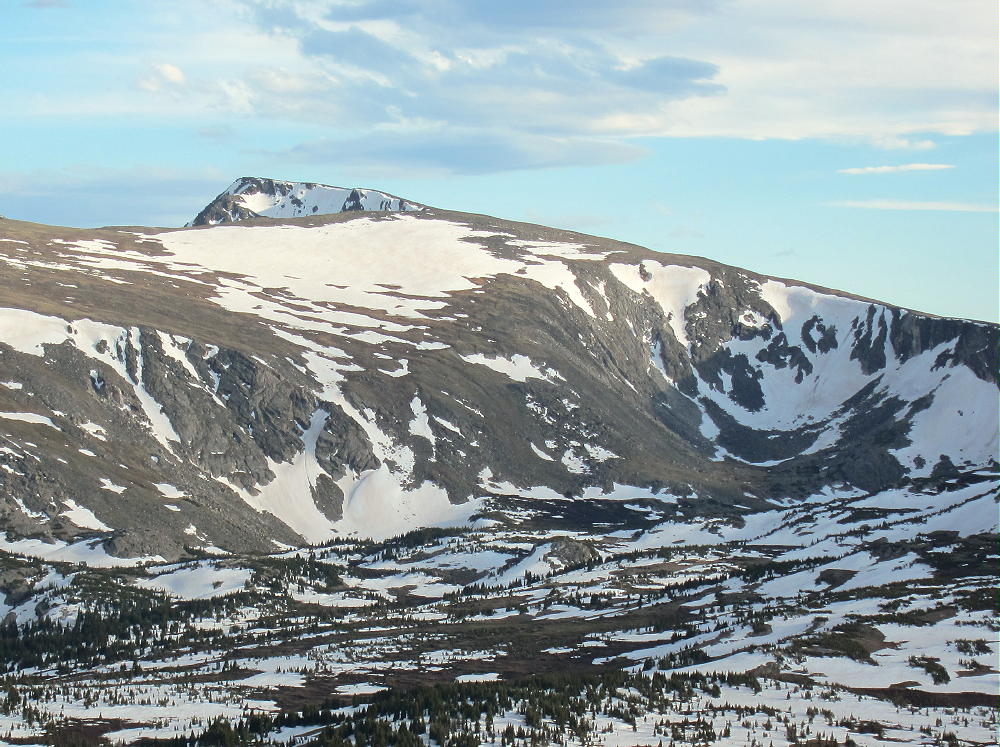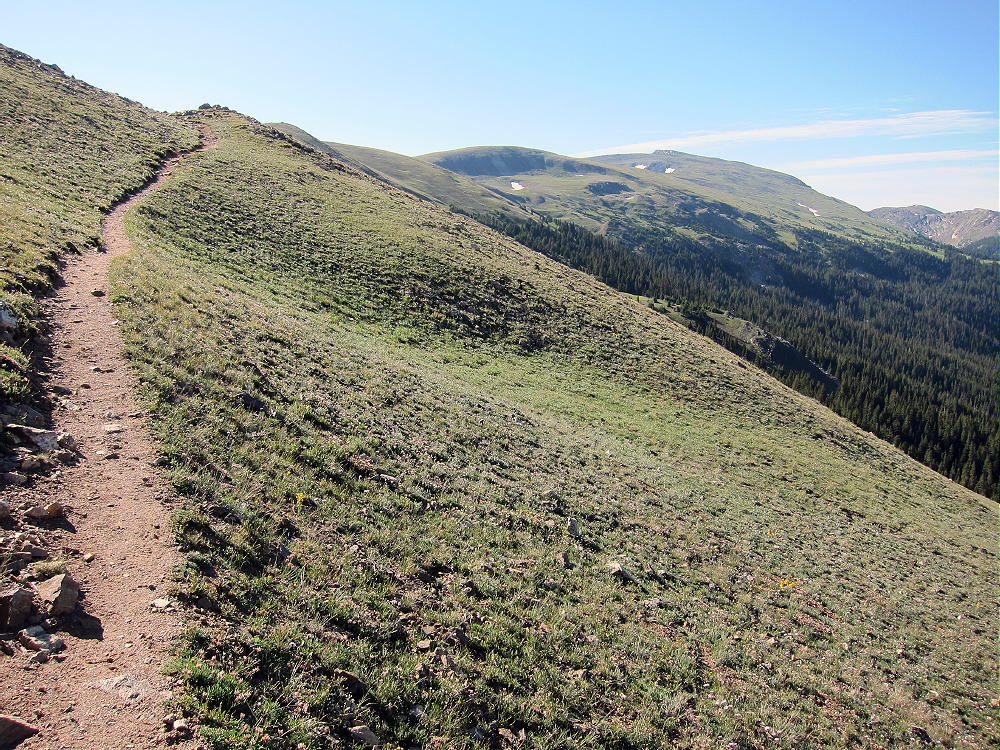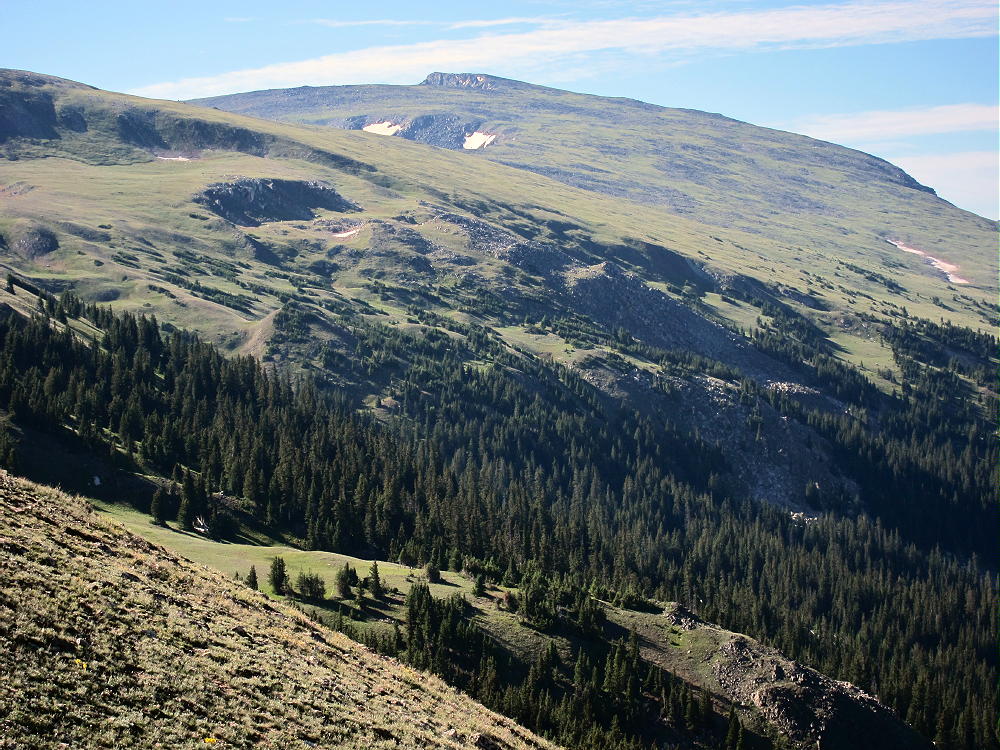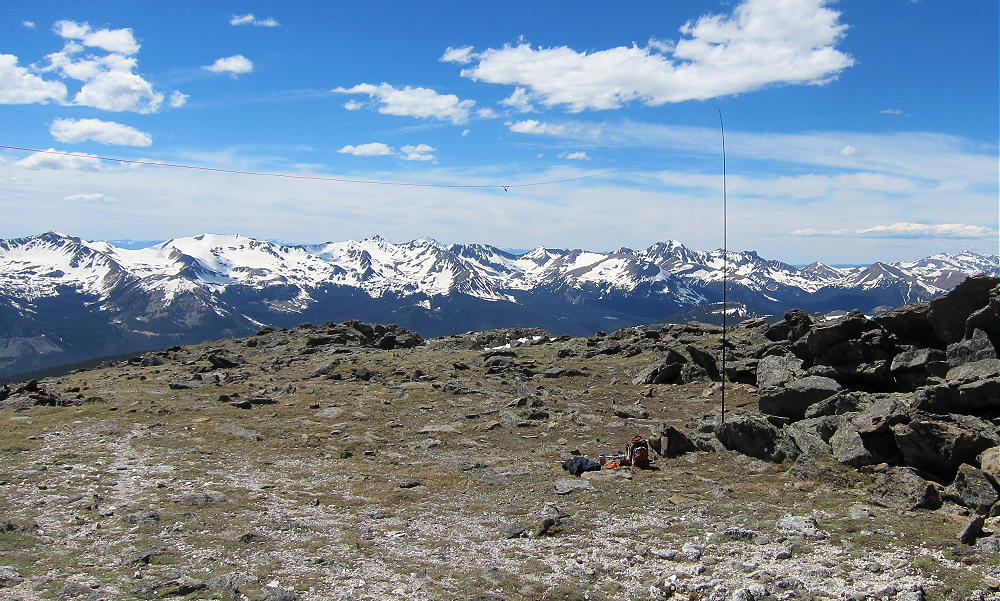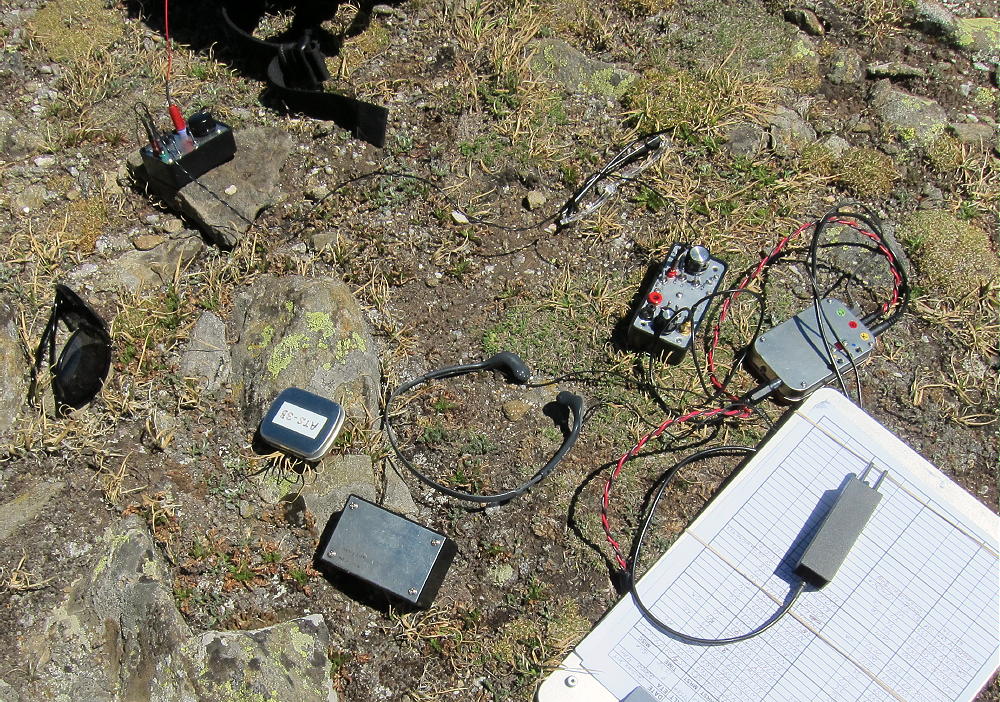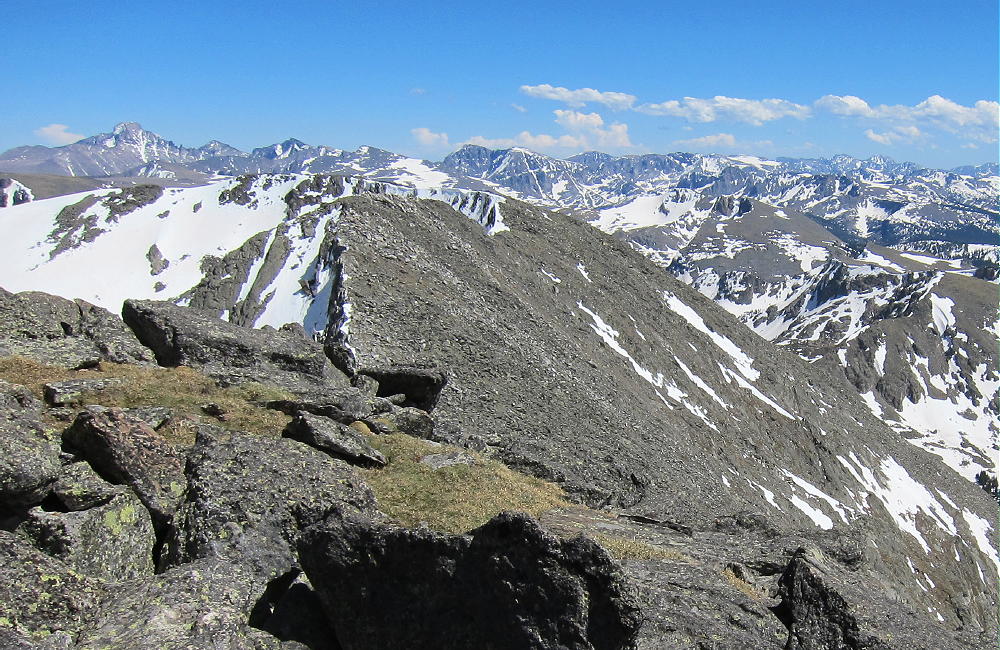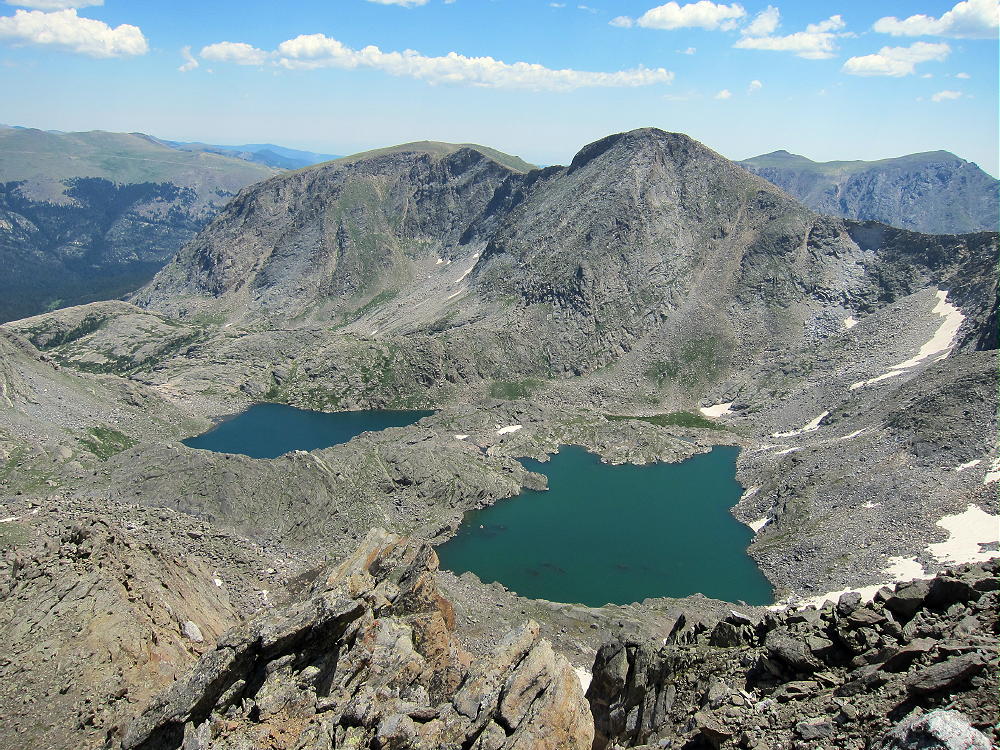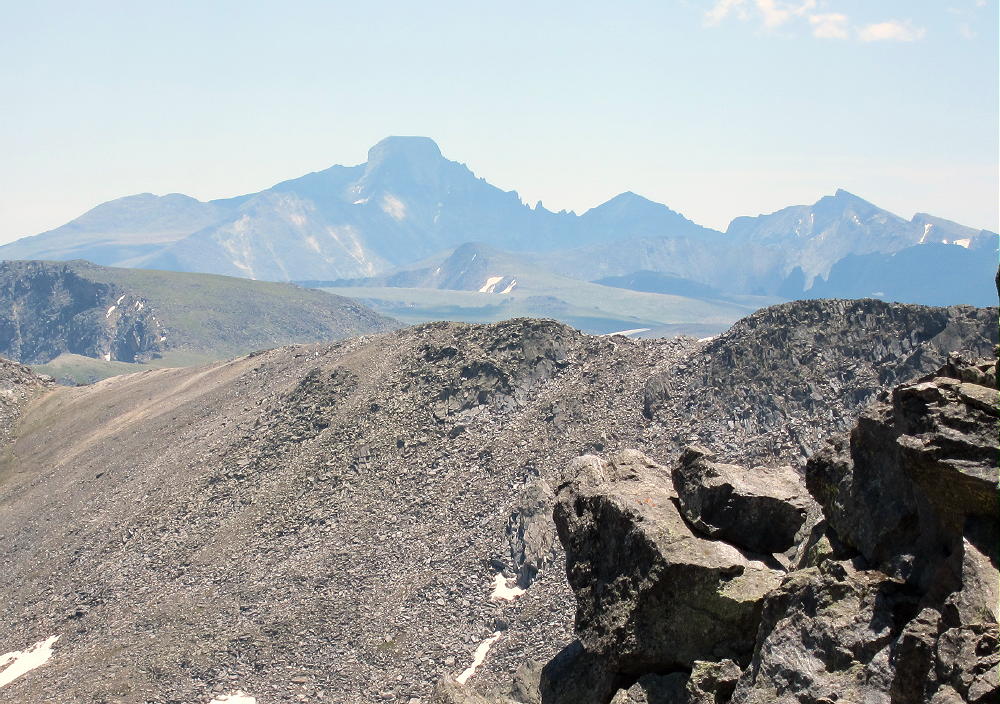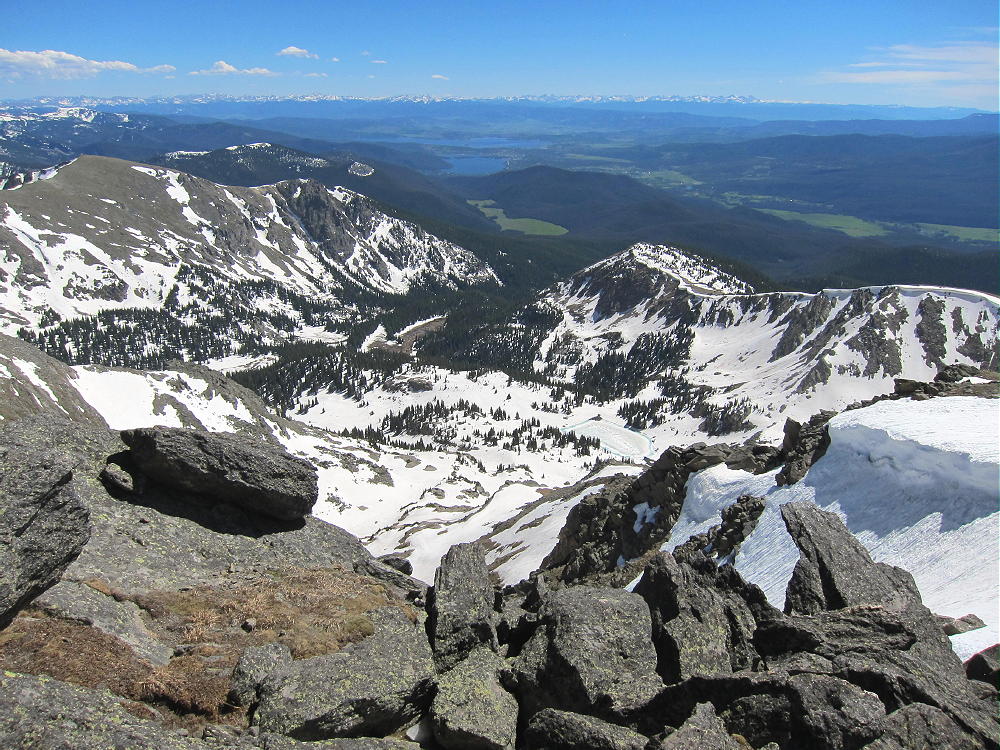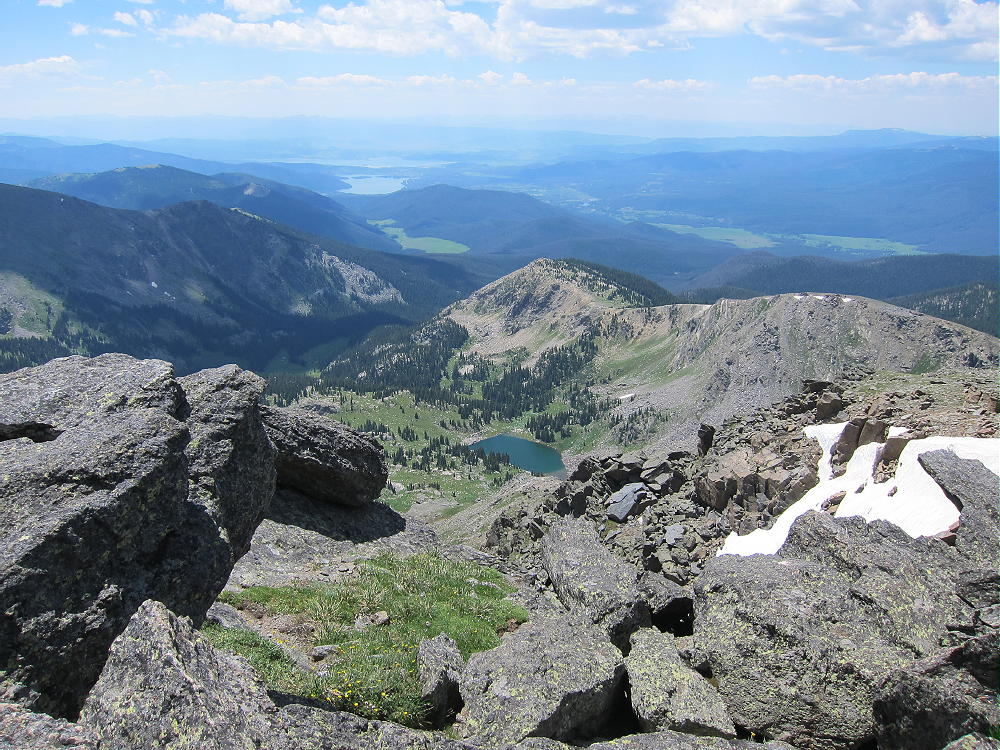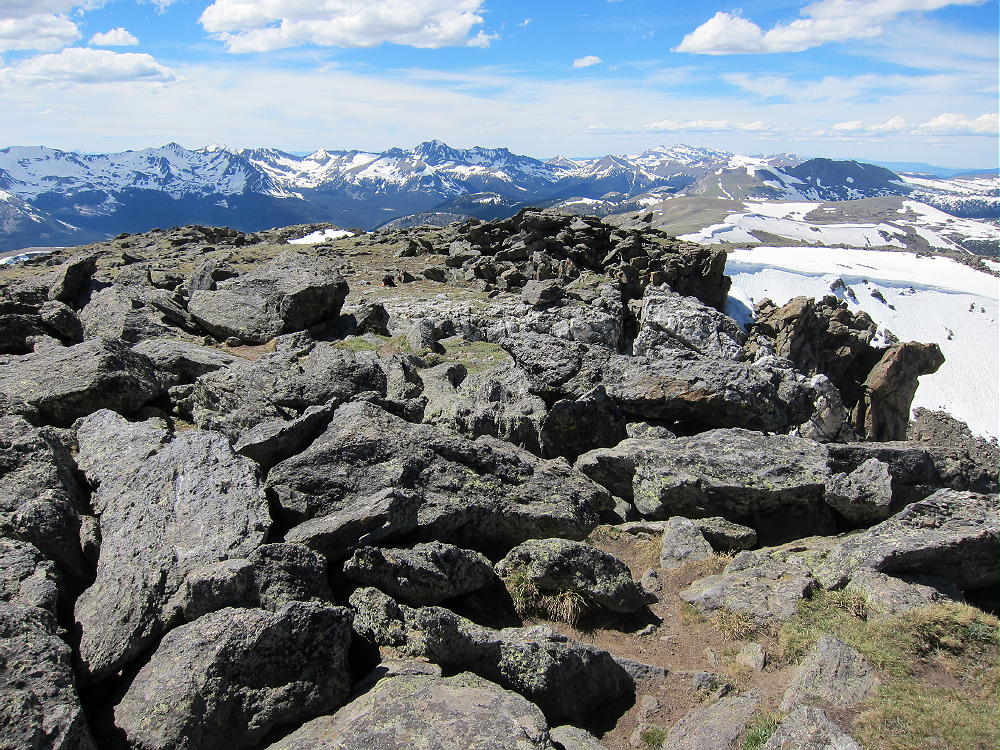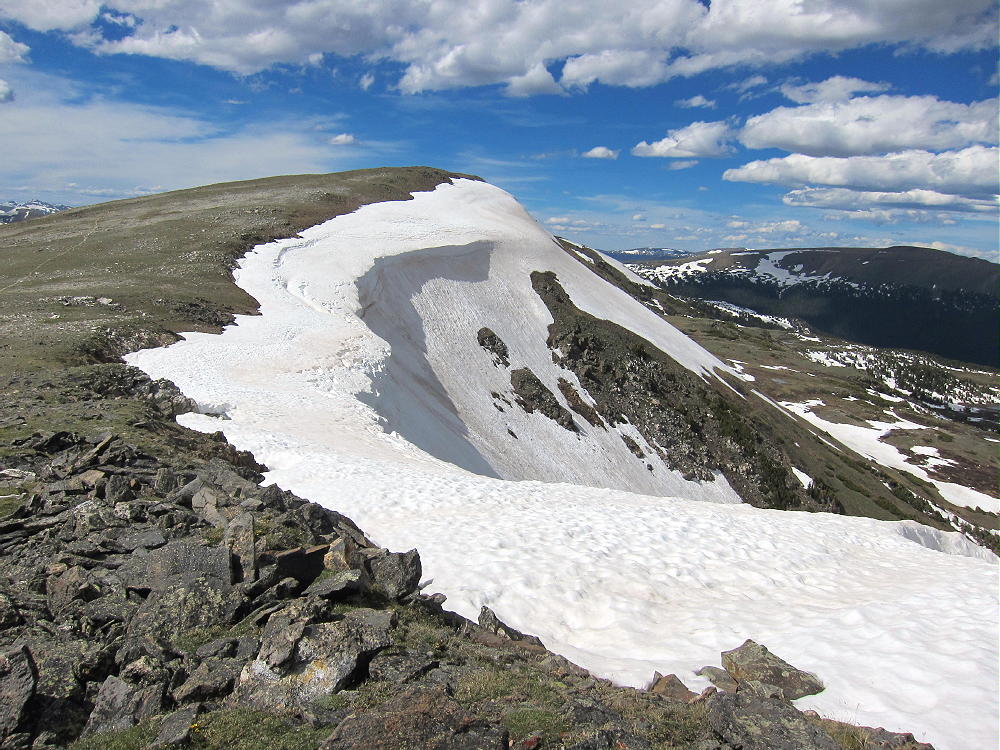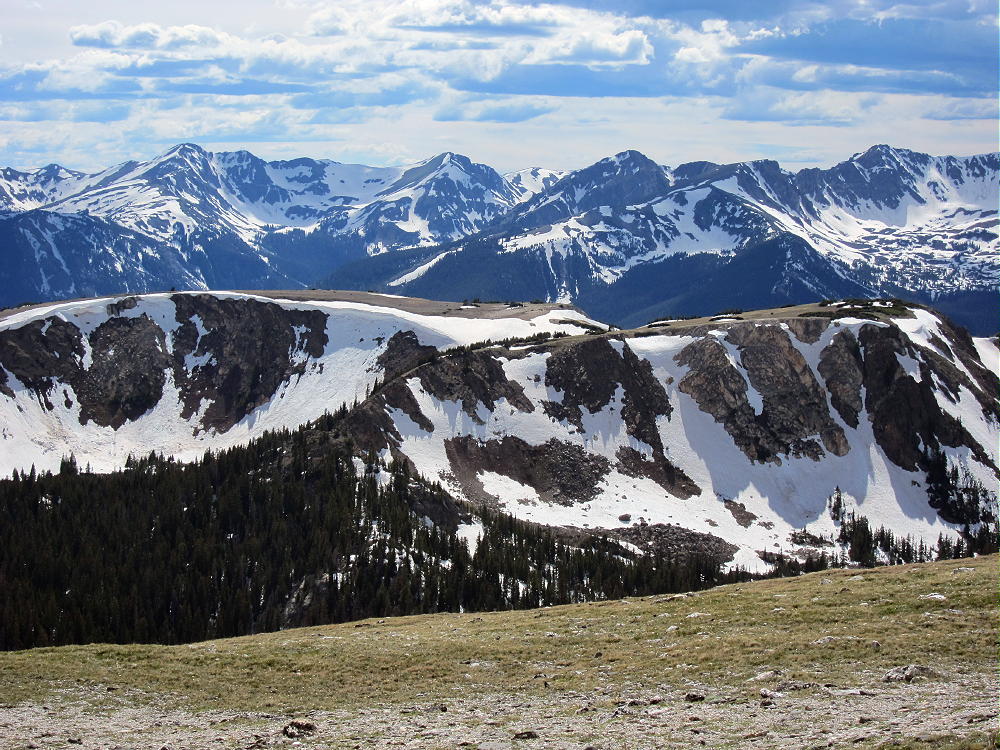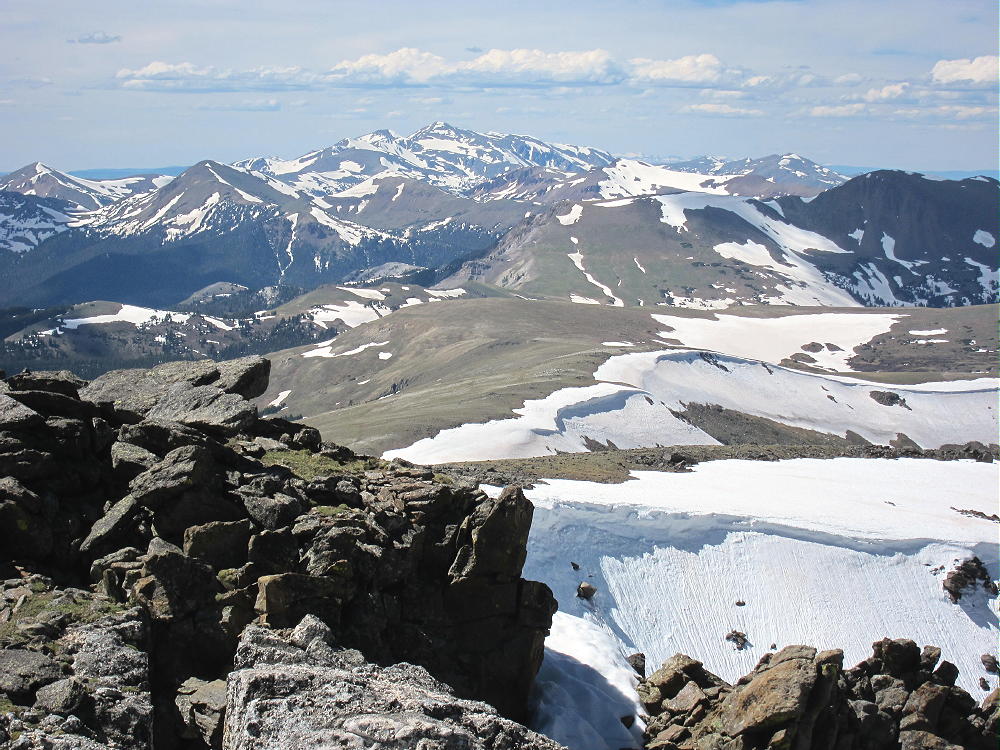W0C/FR-016
Mount Ida
3932 m / 12900 ft
July 21, 2013 First Activation
June 20, 2014
by KX0R
Mount Ida is a classic alpine summit in Rocky Mountain National Park. A spectacular trail leads along the Continental Divide all the way to the top of the peak.
To reach the trailhead, enter Rocky Mountain National Park, drive up Trail Ridge Road, and continue to Milner Pass on the Continental Divide. Milner Pass is at the southwest end of Poudre Lake, at an altitude of 10,759 feet. The road is usually open from late May to about November 1, depending on the snow.
Some navigating is required to hike this trail. Start up the trail next to the southwest shore of the Lake and head toward Mount Ida. The climbs up the Continental Divide ridge south of Milner Pass and gains altitude quickly. Avoid any fork that heads northeast toward Forest Canyon Pass. Soon the trail climbs above tree-line, moderates, and heads southeast toward Mount Ida. The trail stays below and west of the ridge-top for a mile or more; farther south it climbs close to the ridge-top and runs there for about three more miles.
- Mount Ida Trail with Ida at Right – July 2013
- Mount Ida in the Distance – July 2013
The total round-trip distance from Milner Pass to Mount Ida and back is about 9.5 miles; the total ascent is about 2200 vertical feet.
When I went up there June 20, 2014, I misjudged conditions, because trails on the east side of the Park were mostly open and snow-free. I found the trail at Milner Pass under several feet of snow and essentially impassible without snowshoes. With my snowshoes at home, I drove to a point near the Alpine Visitor Center, hiked the snowy trail southwest to Forest Canyon Pass, and then hiked over the ridge-tops of the Divide to the Mount Ida trail.
There was little snow up high, so this long, strong route worked out OK; I found myself on top of Ida – all alone in the high alpine wilderness! The round trip from near the Alpine Visitors Center was just over 13 miles. If I go up there again in June, I’ll remember my snowshoes!
If the weather is good, Mount Ida provides an exciting SOTA activation. The summit is rocky, and the activation zone is large. Some convenient rock outcrops are available for holding a pole, or for tying the far end of the wire. The flat area northwest of the summit is a good spot to set up.
- June 2014 SOTA Activation on Ida
- Mount Ida Radio Gear 2014
- June 2014 SOTA Activation Antenna to Ida Summit
The only problem – besides wind – is that there are marmots – these large rodents sometimes seek out rope or Dacron antenna lines and sabotage the activation.
Note that in the Summitpost Link on the SOTA page – this is a good article – the writer suggests hiking to Mount Ida from Bear Lake as a possible alternative to starting at Milner Pass. The journey from Bear Lake is an extreme hike, with much of the route exposed to weather for about seven miles each way along the high Divide. Only hikers in top physical condition, with plenty of high-altitude experience, should attempt that route – and then only with adequate gear and preparation for the conditions. The round-trip distance from Bear Lake is well over 20 miles, and much of that is off-trail and above tree-line!
Even on a sunny day, Mount Ida can be very windy – be prepared. The high, spectacular trail along the Divide is wonderful on a nice summer day, but it’s dangerous if storm clouds build up. An early start is a good idea. Avoid this area if thunderstorms are forecast, and be prepared to head down if the weather threatens. There is no good way off the high trail along the Divide, so don’t get caught up there!
73
George Carey Fuller
KX0R
- Azure Lake, Inkwell Lake, and Mount Julian from Ida
- Longs Peak from Ida
- Mount Ida View Southwest to Grand Lake June 2014
- Mount Ida Southwest to Grand Lake July 2013
- Mount Ida Summit View North
- Cornices along the Divide Route
- Jackstraw Mountain and Never Summer Mountains from Ida
- View North along Divide from Ida
- Alpine Flowers on Ida
![]() !! WARNING !! There are old mountaineers, and
bold mountaineers... there are no old-bold mountaineers.
Hiking and mountain climbing are potentially hazardous activities particularly in Colorado with its extreme elevations. I am not accepting responsibility for any death or injury resulting from activations based on my trip reports. Proper training, experience, and personal capability assessment is required - enjoy!
!! WARNING !! There are old mountaineers, and
bold mountaineers... there are no old-bold mountaineers.
Hiking and mountain climbing are potentially hazardous activities particularly in Colorado with its extreme elevations. I am not accepting responsibility for any death or injury resulting from activations based on my trip reports. Proper training, experience, and personal capability assessment is required - enjoy!











